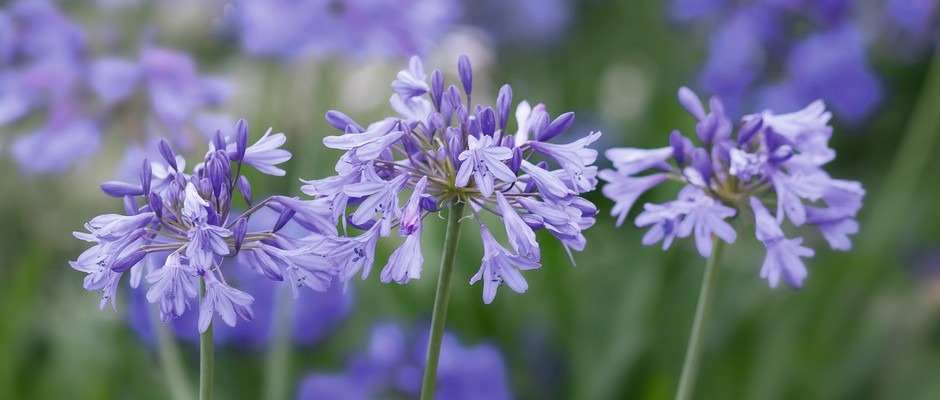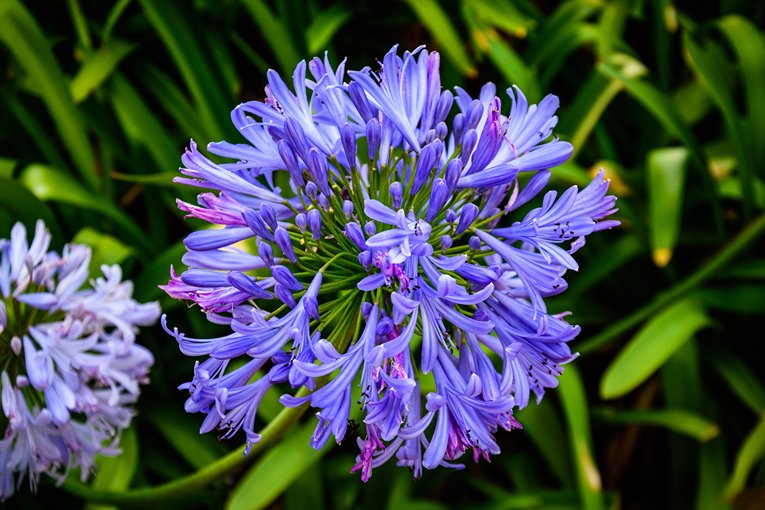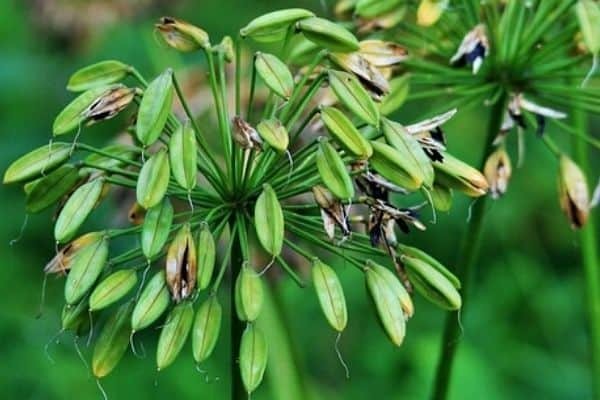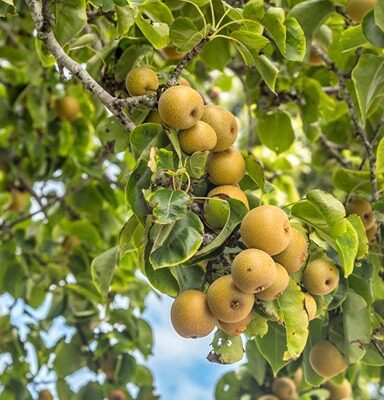How to Grow and Care for Agapanthus: Best Tips
Agapanthus, a genus comprising six species of perennial plants, showcases vibrant bell-shaped flowers. These flowers exhibit a range of colors including blue, pink, purple, and white, often adorned with a central stripe on each petal. Typically, Agapanthus blooms from early summer through fall. The plants boast tall stalks on which the flowers bloom, while their leaves spread out extensively from the base. The color of the leaves varies depending on the species, ranging from dark to light green, gray-green, or blue-green. Some Agapanthus varieties have evergreen leaves, while others shed their foliage.

The captivating blooms attract hummingbirds and can be used as lovely cut flowers. Additionally, many species are resistant to deer and rabbits. However, it is important to note that Agapanthus is toxic to both humans and pets.
Agapanthus Care
Taking care of your agapanthus plants requires different approaches depending on whether they are evergreen or deciduous species or hybrids. One of the primary concerns is how to safeguard your agapanthus during the winter season. Evergreen varieties are particularly susceptible to cold temperatures, while deciduous types can tolerate light frost on occasion but may sustain damage if the ground freezes.
Agapanthus can be cultivated in most USDA zones; however, evergreen species are less resilient in USDA hardiness zones 7 through 10 and may benefit from winter protection. In northern regions, a recommended practice is to dig up the rhizomes of deciduous perennial varieties in autumn and either store them or plant them in pots for the following spring.

Planting
The planting process should be tailored based on the species and the climate conditions of your location, as these plants require protection from cold temperatures.
For USDA hardiness zones 9 and 10, it is recommended to plant agapanthus in the ground during the autumn season. In zones 7 and below, spring is the ideal time for planting when soil temperatures reach around 50 degrees Fahrenheit. Place the rhizomes approximately two inches deep and space them 12 to 18 inches apart. Ensure that the pointed end of the rhizome faces upward. To provide insulation against cold weather, apply a thick layer of mulch.
If you prefer to grow in pots, it is advisable to plant the rhizomes in spring, around 1 inch deep and with 8 inches of spacing between them. Choose a well-draining potting mix that is fertile, and use a container with drainage holes. A pot with a diameter of 12 inches is suitable for accommodating a single plant, although agapanthus tends to bloom more profusely when slightly root-bound.
Light
Agapanthus thrives in full sun conditions, requiring approximately six to eight hours of sunlight daily to promote optimal blooming. However, in regions with hot climates, providing some afternoon shade can be beneficial for the plants.
Soil
Agapanthus exhibits tolerance towards different soil types, but it flourishes best in fertile, light, sandy loam that offers good drainage. Agapanthus africanus prefers slightly acidic soil with a pH ranging from 5.5 to 6.5, while other species of this flower can grow well in neutral soil with a pH of 7.0.
Water
To ensure healthy growth, water agapanthus regularly, aiming for an average of 1 inch of water per week until the plants become established. Once established, you can reduce the amount of water to approximately 1/2 inch per week. Keep in mind that agapanthus is drought-resistant and cannot tolerate waterlogged conditions. During the winter months, significantly decrease or entirely stop watering until new growth emerges in the following spring.
Temperature and Humidity
The ideal temperature range for agapanthus is typically between 50 and 60 degrees Fahrenheit. While certain species can tolerate temperatures as low as 20 degrees Fahrenheit, many evergreen varieties should be brought indoors once the average temperature reaches 50 degrees Fahrenheit. In regions with high humidity, it is advisable to thin out the plants to promote better air circulation, which helps reduce fungal problems.
Fertilizer
For optimal nutrition, apply a balanced fertilizer once during the spring season and again two months later. Alternatively, you can opt for a fertilizer with a slightly higher phosphorus content, such as a ratio of 5-10-10 (NPK). It is important to avoid excessive nitrogen fertilization, as this can hinder blooming or cause the flower stems to fail in reaching their full height. Refrain from fertilizing agapanthus after the month of August.

Types of Agapanthus
The six species of agapanthus are indigenous to South Africa and have not been discovered growing naturally anywhere else in the world. While these species readily hybridize and are still undergoing classification, there exist numerous subspecies and cultivars. Here are some of the commonly cultivated and popular types:
- ‘Arctic Star’: This semi-evergreen cultivar blooms early and showcases impressive clusters of trumpet-shaped white flowers. ‘Arctic Star’ is known for its remarkable hardiness, withstanding freezing temperatures.
- ‘Bressingham Blue’: As a deciduous variety, this type produces large flower clusters measuring around four and a half inches in diameter. The flowers exhibit a captivating amethyst blue hue with a distinct dark blue stripe. Blooming on three-foot stalks, ‘Bressingham Blue’ flowers typically appear in the middle to late summer.
- Agapanthus praecox ssp. orientalis ‘Queen Mum’: This evergreen cultivar delights with its flowers in white and violet-blue hues. The clusters of blooms emerge on stalks reaching up to four feet in height, gracing the landscape in early to mid-summer.
- Agapanthus campanulatus var. patens F2 hybrid ‘Brilliant Blue’: A compact dwarf cultivar, ‘Brilliant Blue’ grows to a modest size of two feet tall and wide. This African lily presents its stunning display of rich blue flowers with a striking dark purple stripe, typically flowering in August.

Pruning
After the flowers have faded, it is recommended to remove the entire stem to encourage the agapanthus to bloom again. You can also prune any dead or damaged foliage as needed, but be cautious about cutting back the foliage of deciduous types after they have finished blooming. The leaves play a crucial role in providing nutrients to the rhizome, which stores energy for the following year’s blooms. Therefore, it is advisable to allow the leaves to naturally die back. In the case of evergreen varieties, the leaves can be trimmed to a length of six to eight inches, facilitating division and planting in containers.
Propagating
The most reliable and straightforward method of propagating agapanthus is through division. Garden-grown plants should be divided approximately every four to six years. For potted plants, they tend to bloom more abundantly when their roots are slightly constricted, so it is generally recommended to divide and repot them every four to five years. The ideal timing for division is early spring for deciduous plants and autumn, after blooming, for evergreen varieties.

Growing From Seed
To grow agapanthus from seed, follow these steps:
- Collect seeds from dry brown pods that mature in late summer or early autumn. It is important to sow the seeds immediately, as they have a short lifespan. Alternatively, you can purchase agapanthus seeds.
- Prepare seed trays and use a moistened, well-draining seed starting medium to fill them.
- Optionally, soak the seeds for several hours before planting. This step can help speed up germination.
- Place the seeds on top of the medium and lightly cover them with additional medium or grit. Agapanthus seeds require exposure to light for successful germination.
- Lightly water the seeds and find a sunny location where temperatures range between 68 and 86 degrees Fahrenheit (20 to 30 degrees Celsius).
- Ensure that the soil remains moist but not overly wet during the germination process.
- Germination typically takes around one month. Once the sprouts emerge, move them to a cooler location with a temperature of around 58 degrees Fahrenheit (14 degrees Celsius). However, continue providing them with bright light.
- As the root structure develops well, transfer the seedlings to 12-inch pots, or if the final frost has passed, you can plant them directly into the garden.

Potting
- Select a container with a width of 12 inches that has proper drainage holes. Suitable materials for the pot include clay, ceramic, or plastic.
- Fill the container with a lightly moistened mixture of compost or potting soil combined with sand or grit to ensure adequate drainage.
- Create a shallow depression in the center of the pot. Place the agapanthus rhizomes in the depression, ensuring they are positioned approximately 1 inch deep with the pointed end facing upward. Cover the rhizomes with the potting medium.
- If using a purchased plant, remove it from its original container and plant it in the pot at the same level as it was previously growing.
- Position the pot in an area with indirect sunlight initially. Withhold water for a few days to allow the plant to adjust and acclimate to its new environment.
- Move the pot to a sunnier location as the plant acclimates, and gradually increase the amount of sunlight it receives.
- Water the agapanthus with approximately 1 inch of water per week until it becomes well-established. Once established, reduce the watering to approximately 1/2 inch of water per week.
Repotting
- Repot individual agapanthus plants into containers that are four inches wider every two years to accommodate their growth and spread.
- Choose a new pot that is 12 inches wider than the previous container to provide enough space for the plant.
- Follow the potting instructions mentioned earlier, ensuring proper planting depth and adequate drainage.
- Plants grown in 24-inch containers can be allowed to grow until their blooms begin to diminish, at which point they should be divided to maintain their vitality.
Overwintering
Agapanthus plants are generally resilient, but their winter hardiness can be a challenge. It is crucial to assess the cold tolerance of your specific plants. Here are some guidelines for overwintering agapanthus:
- Evergreen agapanthus varieties are typically not tolerant of cold winter weather. It is advisable to either heavily mulch them or grow them in pots and bring them indoors for overwintering. Unless you reside in USDA hardiness zones 9 and 10, it is best not to keep evergreen agapanthus outdoors during winter.
- Deciduous, semi-evergreen, and half-hardy varieties have varying levels of cold tolerance. Deciduous agapanthus is considered half-hardy up to USDA zone 6, but some hybrids may retain their leaves during winter if exposed to minimal frost. For these varieties, you can lift the rhizomes in autumn after the leaves have died back, store them, and replant them in spring. If growing them in the garden, apply a heavy layer of mulch for added protection. Alternatively, move potted plants to a sheltered location. During the winter months, reduce or withhold watering.
- To store agapanthus tubers, allow them to cure for several days until they are dry. Then, wrap them in newspaper and store them in a cool, dark location.

Common Pests and Plant Diseases
Agapanthus plants are generally resistant to insects, but they can occasionally attract aphids, mealy bugs, and red spider mites. To address these issues, a forceful spray of water from a hose can effectively dislodge the pests. In case of severe infestations, you can treat the plants with horticultural or neem oil to control the pests.
Fungal diseases, such as verticillium wilt, can affect agapanthus plants that are overcrowded. To prevent these diseases, it is recommended to regularly repot and divide the plants, which promotes better air circulation and reduces the risk of fungal infections.
Promoting Blooming
If your agapanthus plants fail to bloom, several factors may contribute to the issue. Cold weather, insufficient winter protection, and inadequate light are often the culprits. Here are some tips to encourage agapanthus blooming:
- Ensure that your plants receive six to eight hours of sunlight daily, as this is essential for optimal blooming.
- Provide adequate winter protection by applying a layer of mulch around the base of the plants. For potted agapanthus, consider moving them indoors or to a sheltered location during the colder months.
- Feed your plants in spring with a fertilizer that is higher in phosphorous. This nutrient promotes flower production. Additionally, consider providing a mid-season fertilizer application to further support healthy blooming.
Common Issues
Yellowing Leaves
Evergreen agapanthus varieties may exhibit yellowing leaves towards the end of the growing season. This occurrence is a natural process where older foliage dies back. You can safely remove these yellowing leaves. New leaves will emerge from the center of the plant to replace the dying foliage, ensuring the plant’s vitality.
Reduced Blooms
If your agapanthus plants are producing fewer blooms than usual, it may indicate the need for division. Over time, the plants can become crowded, impacting their flowering ability. To address this issue, carefully divide the plant clump. Replant the newest growth and discard older plants from the center of the clump. This process allows for better access to nutrients and promotes healthier blooms in the future.



